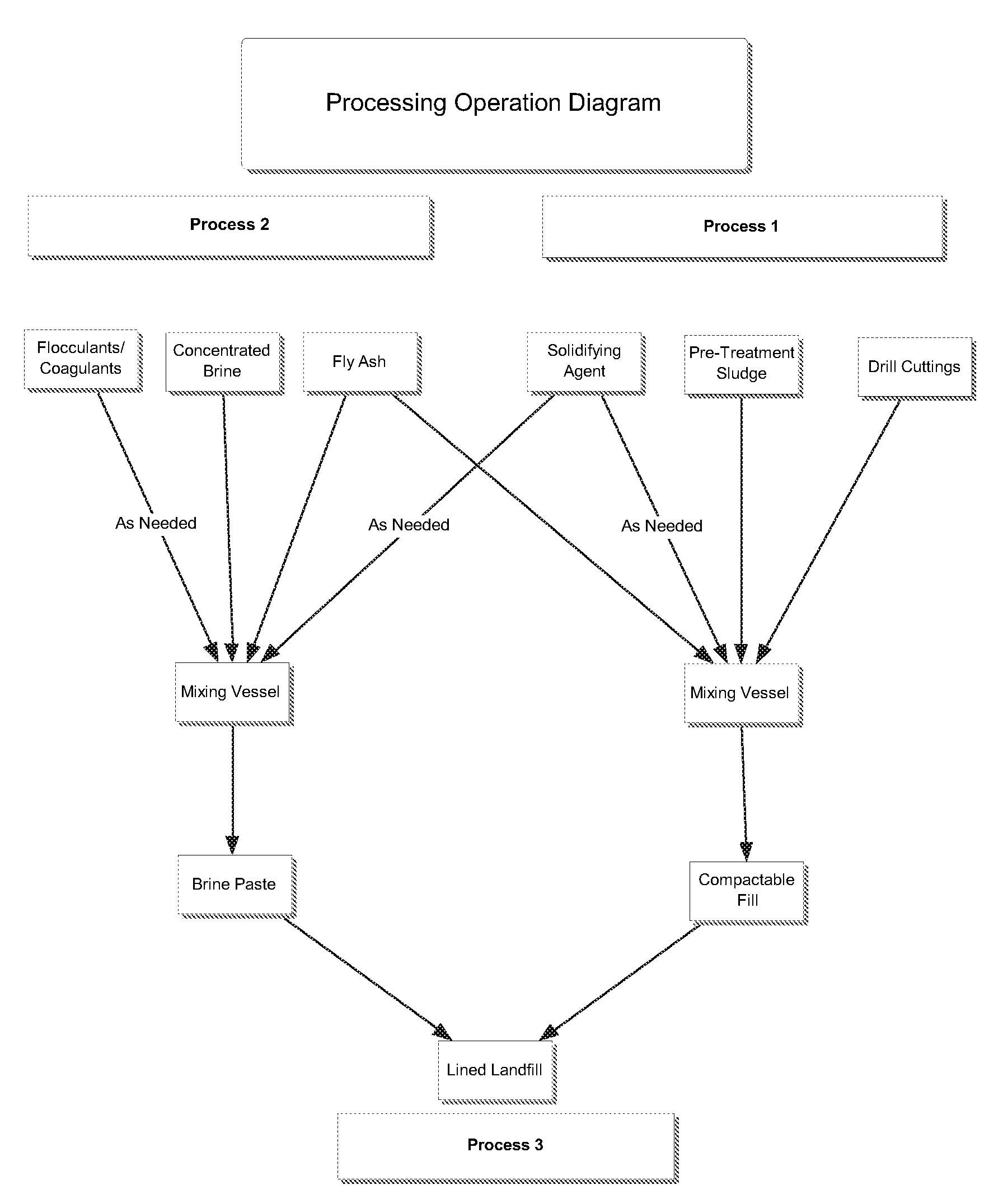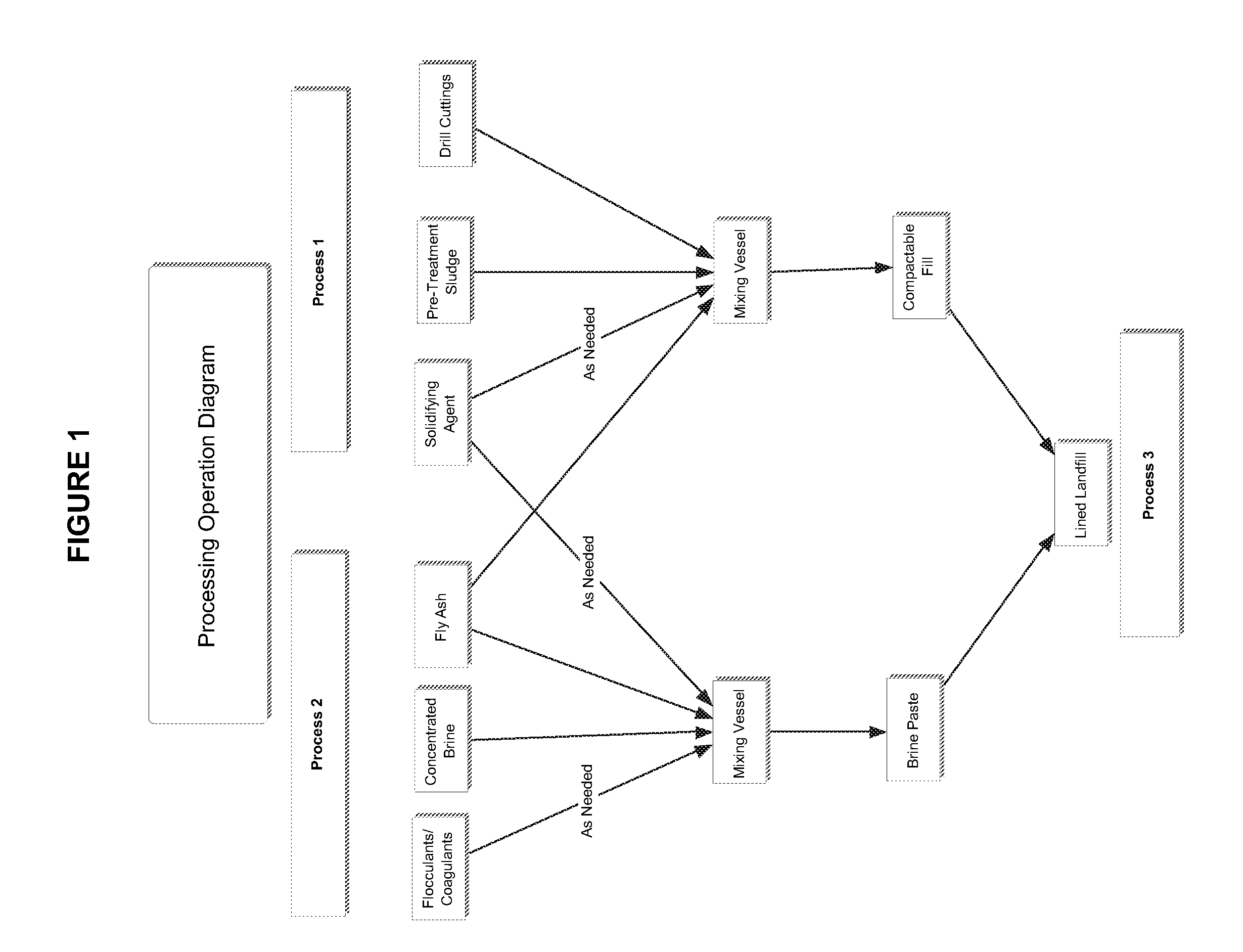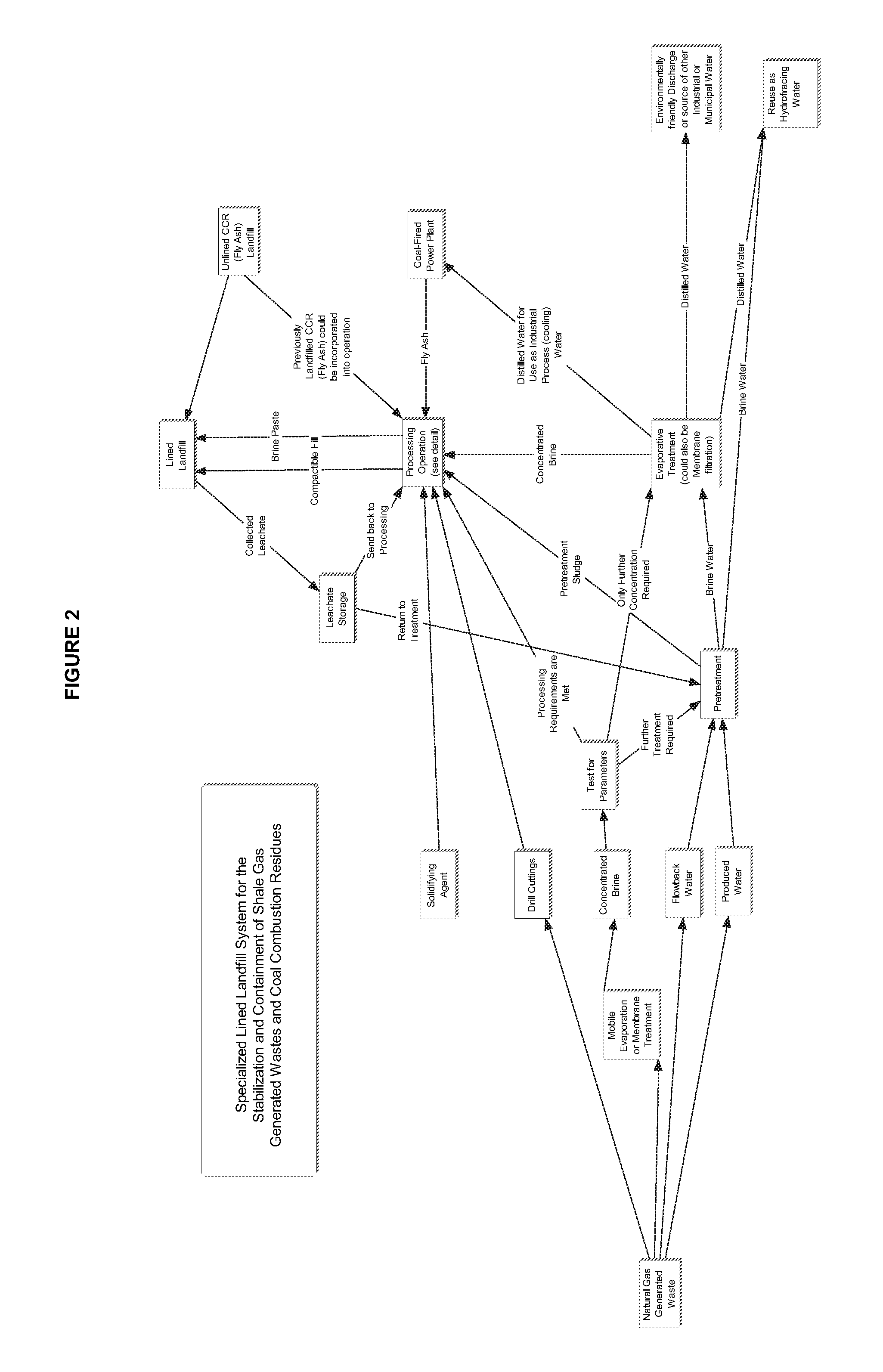Specialized lined landfill system for the stabilization and containment of drilling wastes and coal combustion residues
a landfill system and drilling waste technology, applied in solid waste management, climate sustainability, foundation engineering, etc., can solve the problems of pollution, novel and significant challenges to the state's waste disposal system, and primary and potentially hazardous waste streams, and achieve the effects of reducing the impact of two major waste streams on the environment, convenient placement, and compacting
- Summary
- Abstract
- Description
- Claims
- Application Information
AI Technical Summary
Benefits of technology
Problems solved by technology
Method used
Image
Examples
examples
[0053]FIG. 1 shows one embodiment of the present invention. FIG. 1 includes an embodiment of Process 1, wherein drilling wastes including drill cuttings and pre-treatment sludge are combined with fly ash and solidifying agents, as needed, in a mixing vessel to make compactable fill. FIG. 1 also includes an embodiment of Process 2, wherein brine and fly ash are combined with other agents as needed in a mixing vessel to form a paste. In this embodiment, the fill and the paste are combined in a lined landfill.
[0054]FIG. 2 shows an embodiment of a system of the present invention. A drilling site generates wastes including drilling wastewaters that are pre-treated and may be discharged or re-used as fracking water. The wastewaters may alternatively be used in Process 1 and / or 2 to form fill and / or paste. Similarly, the drill cuttings from the drilling site are used in Process 1 and / or 2. The CCR for Processes 1 and / or 2 are provided in this embodiment by a coal-fired power plant or an ex...
PUM
| Property | Measurement | Unit |
|---|---|---|
| depth | aaaaa | aaaaa |
| pressure | aaaaa | aaaaa |
| composition | aaaaa | aaaaa |
Abstract
Description
Claims
Application Information
 Login to View More
Login to View More - R&D
- Intellectual Property
- Life Sciences
- Materials
- Tech Scout
- Unparalleled Data Quality
- Higher Quality Content
- 60% Fewer Hallucinations
Browse by: Latest US Patents, China's latest patents, Technical Efficacy Thesaurus, Application Domain, Technology Topic, Popular Technical Reports.
© 2025 PatSnap. All rights reserved.Legal|Privacy policy|Modern Slavery Act Transparency Statement|Sitemap|About US| Contact US: help@patsnap.com



